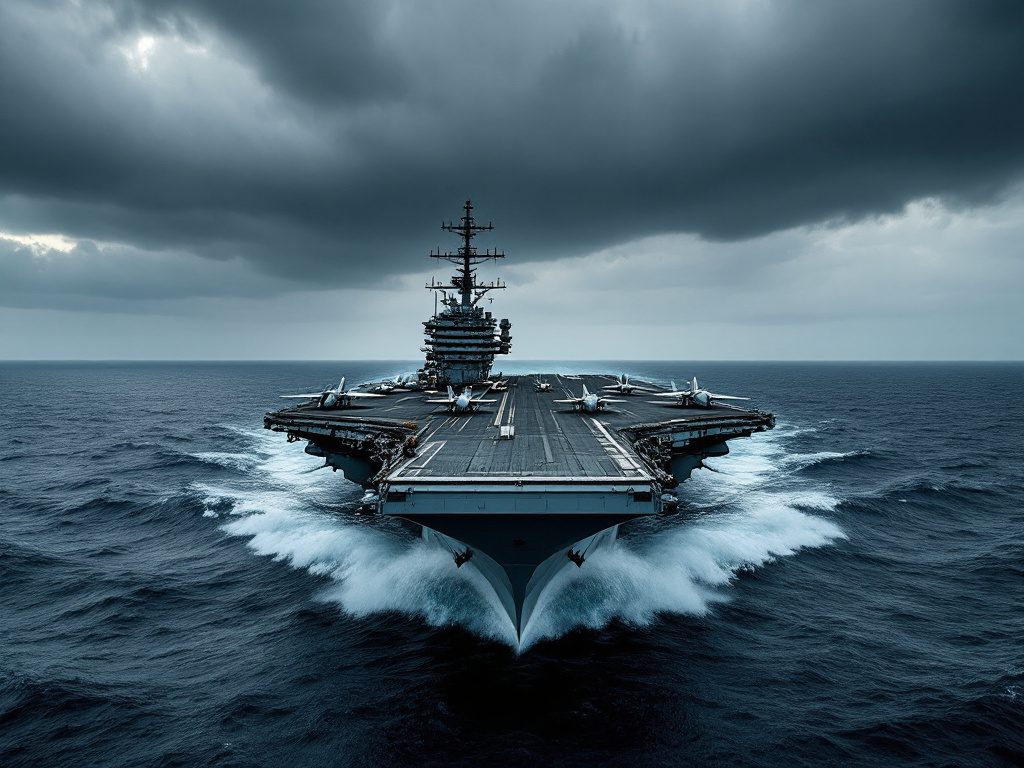USS Truman’s Unending Tour: More Than a Symbol of Power
At first blush, keeping a U.S. aircraft carrier in the Red Sea might sound like business as usual. Yet, the latest extension of the USS Harry S Truman’s deployment by Defense Secretary Pete Hegseth has turned an already taxing mission into an emblem of escalating geopolitical stakes—and human fatigue.
The Truman, deployed for over seven months of relentless operations since leaving Norfolk, now finds itself ordered to remain yet again, just as hopes for homecoming were rising. This is not simply a matter of strategic posturing; it’s the lived reality for thousands of sailors and aviators enduring the grind of extended separation, high-tempo duty, and a series of mishaps that have tested morale and equipment alike.
Departing Norfolk in September 2024 and entering the hot zone of the Red Sea by December, the Truman’s mission quickly expanded from deterrence to near-daily combat operations. The directive aligns with President Donald Trump’s aggressive push against Yemen’s Houthi rebels, who have targeted the region’s commercial arteries, upending assumptions about safe international trade routes in a post–Cold War era.
When Strategic Pressure Meets Human Limits
Maintaining two carrier strike groups—Truman in the Red Sea and the USS Carl Vinson further south in the Gulf of Aden—looks decisive on paper. Yet this rarely attempted dual-carrier presence is straining the U.S. Navy’s capacity, a fact not lost on fleet commanders or families back home.
Readiness comes at a cost, and nowhere is that clearer than aboard the Truman. Recent months have seen the loss of two fighter jets and a harrowing incident in which a sailor was injured during a botched maneuver that sent both a jet and towing tractor overboard. Just weeks ago, a collision with a merchant ship underscored the hazards of high-intensity, extended deployments.
As Harvard’s military sociologist Sarah Tarzi notes, “A carrier’s operational effectiveness is only as strong as the physical and mental resilience of its crew. Extended deployments like this one put both at risk—and in the long run, the Navy itself.” Expert testimony echoes the lived experience of Truman’s sailors, who have faced near-constant readiness drills, long watches, and stints of monotony pierced by brief moments of high danger. “Retention and morale are not just buzzwords,” says retired Admiral James Roughgarden, a frequent critic of overextended fleet tasking. “They’re the bedrock of national security.”
“The Harry S. Truman strike group has been crushing it – crushing it. I want to make sure when they come back, they feel that pride in their work.” – Adm. Jim Kilby, acting chief of naval operations
The military brass can—and often do—praise the perseverance of sailors, but repeated extensions without clear exit strategies raise serious questions. Are political leaders listening to the lessons of history, or are they falling back on a 20th-century playbook in a 21st-century world?
The Dominoes of Policy: Who Pays for Prolonged Power Projection?
Step back and the picture broadens. The Truman’s continued mission highlights a persistent tension between military escalation and actual security outcomes. Since the campaign’s intensification on March 15, U.S. Central Command claims to have struck over 1,000 targets linked to Houthi forces—yet missile and drone threats have not fully ceased. This cycle of escalation evokes past U.S. interventions in the Middle East, where declarations of progress often obscured mounting costs and shifting objectives.
History offers pointed lessons. The Navy’s all-hands-on-deck approach in the Persian Gulf during the 1980s, for instance, secured vital sea lanes but also led to catastrophic mistakes, such as the downing of Iran Air Flight 655. The constant pressure to “show presence” sometimes led to tragic consequences and long-term regional damage—a caution unheeded by hawkish policymakers eager for quick results in a complex world.
Pew Research data reveals that public support for open-ended U.S. military operations has dropped sharply since the Iraq and Afghanistan wars. Americans—especially veterans’ families—have grown wary of strategies that prioritize momentary advantage over sustainable outcomes. How many deployments can a democracy stretch before the consent of the governed frays beyond repair?
Beneath sterile official statements, it is clear: the burden of war falls largely on the same families and communities again and again. This concentrated sacrifice fosters resentment and alienation—a reality that forward-thinking leaders ignore at their peril. “When the Pentagon orders repeated extensions or rapid redeployments,” reminds historian Linda Collier, “the downstream impact—on everything from divorce rates to combat readiness—can linger for decades.”
Meanwhile, the ripple effects of U.S. escalation under Trump’s policies reach far beyond military ranks. The Red Sea’s commercial lifeblood—responsible for roughly 10% of global shipping—faces constant threat, risking economic fallout that will not be contained to regional actors or Washington’s adversaries. International shipping insurance rates soar, and European allies have grown skeptical of strategies that lean so heavily on American military might while sidelining diplomatic and humanitarian alternatives.
Rethinking Security in a Volatile Region
The Truman’s extended mission serves as yet another crossroads moments for U.S. strategy in the Middle East. Is brute force still our national answer to every crisis? Or can democratic values and collective burden-sharing—rather than unilateral action—inform a smarter path?
Liberal critics rightly note the absence of sustained diplomatic efforts and the limited investment in regional partnerships to address root causes of violence. Real security cannot be bought by endless deployments and kinetic action alone. Progressive approaches, rooted in multilateralism and long-term trust-building, offer hope for broader stability, decreased military strain, and the possibility of healing for both local populations and American service members.
The current chapter in the story of the USS Harry S Truman is one of courage, grit—and a pressing need for national introspection. How far should America go to safeguard global commerce, and at what true cost to those who serve? Voters and policymakers alike cannot afford to look away, nor to settle for rhetoric over results. The Truman sailors deserve not only the accolades of admirals but the wisdom and restraint of their elected leaders.

